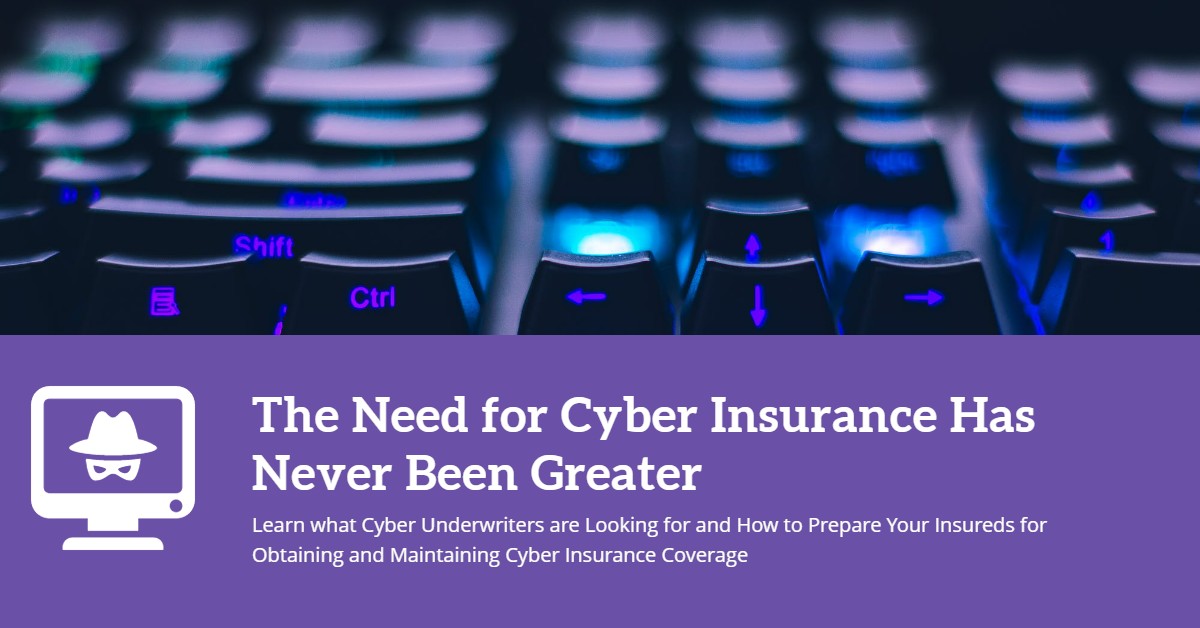Businesses of all sizes are experiencing cyber incidents at an alarming rate. Cyber-related losses like fraudulent wire transfers, phishing and ransomware attacks have become the focus of cyber criminals. Therefore, the need for cyber insurance (for businesses of all sizes) has never been greater. Cyber insurers look carefully at each potential client to make sure they’re taking the appropriate precautions to protect themselves. We can help you to identify those precautions for your clients, and help your client look favorable to potential cyber insurance providers.
How Insureds Can “Ace” the Cyber Underwriting Process:
1. Unused RDP Ports are Closed (open ones are protected)
If a company’s Remote Desktop Protocol is unnecessary, we’d recommend turning it off. If RDP is needed, we recommend that it is secured behind a VPN and MFA.
2. MFA is Turned On Across Key Business Software
MFA, multi-factor authentication, is an extra layer of security used to verify the identity of someone trying to gain access to an account. Lacking MFA on business email accounts or RDP can be costly. Criminals can quickly gain access to business email accounts without this extra security through brute-force attacks or through stolen credentials from the dark web. This results in social engineering losses where money is rerouted to fraudulent bank accounts, but it also leads to ransomware events and major privacy breaches.
3. A Data Management Strategy Exists
Underwriters need to quickly understand the types and amounts of data held. They want to be able to see that the data is being stored and segregated appropriately. So, if one server is compromised, not all data is lost at once, reducing the likelihood of a catastrophic loss. If a business outsources their data management (most do,) it’s good to make sure that they have the right authorized access controls in place and that security checks are ran on any third-party partners.
4. Systems are Running EDR Tools
Firewalls and antivirus software aren’t enough to protect against more sophisticated cybercriminals. Endpoint detection and response (EDR) tools continuously monitor any device that can be connected to a network. They are “doors and windows” a business has around its technology infrastructure to ensure that each is secure and free of malicious activity. An endpoint might be anything from an employee workstation to a company server to a mobile phone. When enabled, EDR tools alert businesses if there are attempts by cybercriminals to breach their systems.
5. Regular Systems Backups are Implemented
Underwriters want to see that data is being backed up regularly, segregated from the main network, and stored offline in an offsite location. This can be the difference between recovering systems quickly following a ransomware attack and paying excessive extortion demands to criminals that have encrypted entire systems including backups.
6. A Good Risk Management Attitude Exists
Often, underwriters simply want to see evidence that a business has security governance. A willingness to implement fixes for security vulnerabilities to educate employees and detect vulnerabilities also helps.
If you have questions about cyber insurance, or need help obtaining coverage please reach out to Founders Professional for assistance.
About the Author

Chris Votta is a Professional & Cyber Liability Practice Leader with Founders Professional. Chris helps retail insurance agencies across the Country secure professional liability, management liability and cyber liability insurance for their hard-to-place businesses of all sizes across a multitude of industries. Chris can be reached at [email protected].

